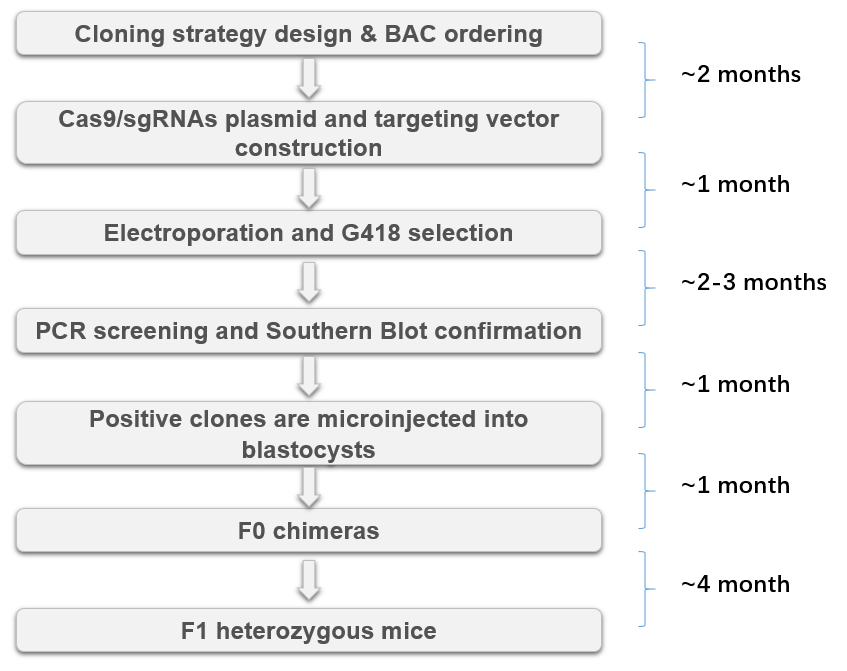

Our innovative gene-editing technology increases gene-editing efficiency by 10 to 20 fold, making our custom model development process faster and more affordable for your research.
on this page
To more broadly adapt to diverse application scenarios involving humanized mice, full-genome humanized mouse models are increasingly trusted and favored by researchers. These models not only exhibit gene expression that more closely resembles that of humans, achieving higher success rates, but are also critical for pharmacodynamic studies of small nucleic acid drugs.
Many genes have a large span, exceeding 100kb or even 200kb. Targeting these genes with conventional CRISPR technology based on fertilized eggs (maximum 20kb editing), or with recombination technology based on embryonic stem cells (maximum 30kb editing) presents significant challenges.
Although BAC transgenic technology can transfer large human gene fragments of up to 200kb or more into mice, these mice do not eliminate murine homologous genes and require a long period for strain construction, failing to keep pace with the rapidly evolving demands of scientific research.
The EGES (Embryonic Stem Cell-based EGE technology) developed by Biocytogen targets ultra-long DNA segments using CRISPR-Cas9 and mouse embryonic stem (ES) cells. It effectively combines the capabilities of large fragment gene recombination in mouse ES cells with the efficient DNA recombination repair mechanism following DNA double-strand cutting by CRISPR/Cas9.
Currently, this technique has successfully targeted gene fragments up to about 150 kb, with ongoing efforts to extend this capability to 170 kb.

Targeting Strategy Diagram
This technique, based on embryonic stem cells, mirrors the technical process and timeline of ES cell recombination techniques. The only difference is that the targeting vectors no longer require external linearization. After simultaneously electroporating the targeting vector and sgRNA plasmids into stem cells, followed by screening for positive clones. The entire project takes about 12 months to obtain positive heterozygous mice

EGES technology workflow